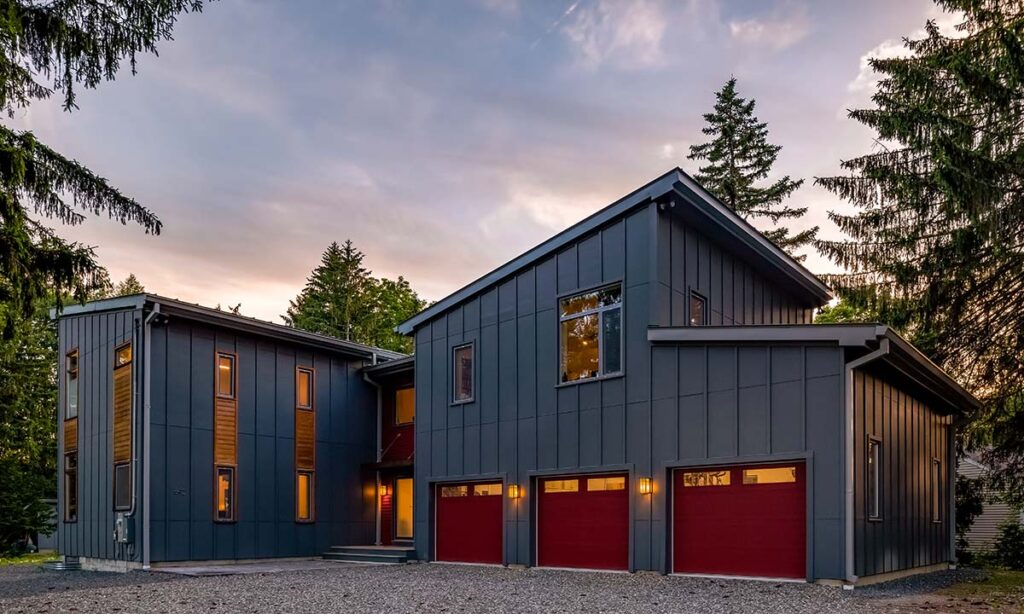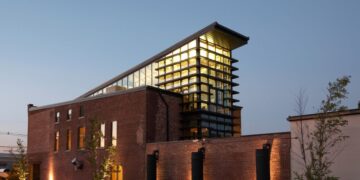The global push for sustainability has elevated the concept of a Net-Zero Energy Building (NZEB) from a visionary ideal to a critical necessity. An NZEB is a structure that, over the course of a year, generates as much renewable energy as it consumes. This goes beyond mere energy efficiency; it represents a complete rethinking of how we design, build, and operate structures to achieve a perfect balance with their environment. As the built environment accounts for a significant portion of global energy consumption and carbon emissions, the widespread adoption of NZEBs is essential for mitigating climate change and creating a more sustainable future. This comprehensive article will explore the fundamental principles, innovative strategies, and future outlook of net-zero energy buildings, demonstrating how they are transforming the architectural and construction industries to build a world that is both more resilient and environmentally responsible.
The Foundational Principle

The path to net-zero is not about simply adding solar panels to an inefficient building. The core philosophy is to first dramatically reduce the building’s energy needs. Think of it as putting a building on a very strict energy diet before giving it its own power plant. The less energy a building needs, the smaller the renewable energy system required to offset its consumption, making the goal more achievable and cost-effective.
A. High-Performance Envelopes: The building envelope, which includes the walls, roof, foundation, windows, and doors, is the first line of defense against energy loss. NZEBs are designed with a focus on creating a nearly airtight and highly insulated envelope.
- Super-Insulation: Using insulation materials with very high R-values (a measure of thermal resistance) in walls and roofs to minimize heat transfer. This keeps the building warm in the winter and cool in the summer with minimal energy input.
- Airtight Construction: Sealing all gaps and cracks to prevent air leaks. A blower-door test is often used to measure the airtightness of a building. An airtight envelope prevents conditioned air from escaping, dramatically reducing the load on heating and cooling systems.
- High-Performance Windows: Using triple-pane windows with low-emissivity (Low-E) coatings to block solar heat in the summer and retain heat in the winter. The frames are also designed to be highly insulated to prevent thermal bridging.
B. Passive Design Strategies: Before relying on technology, NZEBs leverage natural forces to heat, cool, and light the space.
- Optimized Orientation: The building is oriented on the site to take maximum advantage of the sun’s path. In northern latitudes, this often means a long axis running east-west to maximize solar gain on the south-facing side in the winter.
- Strategic Shading: Overhangs, fins, and louvers are strategically placed to block high-angle summer sun while allowing low-angle winter sun to penetrate and warm the interior.
- Natural Ventilation: The building is designed with windows and vents that can be opened to allow for cross-ventilation, using natural breezes to cool the interior without mechanical systems. This is particularly effective in climates with a moderate temperature.
- Daylighting: Maximizing the use of natural light through large windows, light shelves, and skylights to reduce the need for artificial lighting during the day.
The Role of Highly Efficient Systems
Once the energy demand is minimized, the next step is to use the most efficient mechanical and electrical systems available. This ensures that every unit of energy consumed is used as effectively as possible.
A. High-Efficiency HVAC: Traditional heating, ventilation, and air conditioning (HVAC) systems are major energy consumers. NZEBs use highly efficient alternatives.
- Heat Pumps: Air source or ground source heat pumps are used for both heating and cooling. They are far more efficient than traditional furnaces or air conditioners because they simply move heat from one place to another rather than generating it.
- Energy Recovery Ventilators (ERVs): An airtight building needs a way to bring in fresh air. ERVs exchange heat and moisture between incoming fresh air and outgoing stale air, recovering a significant amount of the energy that would otherwise be lost.
B. Smart and Automated Systems: Modern technology plays a crucial role in optimizing a building’s performance.
- Building Automation Systems (BAS): A BAS integrates and controls a building’s systems, from lighting and HVAC to security and shades. It uses sensors to monitor conditions and adjust systems in real-time, ensuring optimal performance and energy savings.
- Smart Lighting: Using LED lighting with motion and daylight sensors. LEDs consume a fraction of the energy of traditional bulbs, and the sensors ensure that lights are only on when and where they are needed.
C. Water Conservation: While not a direct energy consumption issue, water use is tied to the energy needed to heat and pump it. NZEBs often include water conservation features.
- Low-Flow Fixtures: Sinks, toilets, and showers with low-flow fixtures reduce water consumption without sacrificing performance.
- Greywater Recycling and Rainwater Harvesting: Water from sinks and showers (greywater) can be treated and reused for irrigation, while rainwater can be collected for non-potable uses.
Generating Renewable Energy On-Site
With the building’s energy demand reduced to its lowest possible level, the final step is to produce the remaining energy from on-site renewable sources.
A. Solar Photovoltaic (PV) Panels: Solar panels are the most common and effective method for generating on-site renewable energy. They convert sunlight directly into electricity.
- Roof-Mounted Systems: The most common approach, where panels are installed on the roof. This is a highly efficient use of space that is often otherwise unused.
- Integrated PV: In some modern designs, the solar cells are integrated directly into the building materials, such as roof tiles or windows, making them part of the building’s aesthetic.
B. Wind Turbines: For locations with consistent wind, small wind turbines can be an effective way to generate electricity. They are often used in conjunction with solar panels to provide power on days when the sun is not shining.
C. Geothermal Systems: Ground source heat pumps are a form of geothermal system that uses the stable temperature of the earth to provide highly efficient heating and cooling. While not a direct electricity generator, it significantly reduces the building’s electricity demand for HVAC.
The Certification and Measurement of NZEBs

A building is not an NZEB until its performance is verified. This requires a rigorous process of modeling, measurement, and certification.
A. Energy Modeling: Before construction begins, architects and engineers use sophisticated software to model the building’s energy performance. This allows them to test different design strategies and make adjustments to achieve the net-zero goal.
B. Performance Monitoring: Once the building is occupied, its energy consumption and generation are continuously monitored for at least a year. This data is crucial for verifying that the building has achieved its net-zero goal and for making any necessary adjustments to optimize its performance.
C. Certification Standards: A number of organizations have developed rigorous standards for NZEBs, such as the Living Building Challenge’s Net Zero Energy Certification and the Passive House Institute’s Passive House Plus. These certifications provide a recognized benchmark for a building’s performance.
Economic and Environmental Benefits
The upfront cost of building an NZEB can be higher than a conventional building, but the long-term economic and environmental benefits make it a wise investment.
A. Lower Operating Costs: An NZEB has little to no utility bills for electricity, and its costs for heating and cooling are minimal. This leads to significant savings over the building’s lifecycle, often providing a quick return on the initial investment.
B. Increased Property Value: Buildings that are highly energy efficient and have on-site renewable energy systems are highly desirable. They command a premium in the real estate market and are seen as a modern, forward-thinking investment.
C. Environmental Stewardship: The most significant benefit is the environmental impact. NZEBs reduce a building’s carbon footprint to zero, conserve water and other natural resources, and reduce a community’s reliance on fossil fuels, all of which contribute to a healthier planet.
Conclusion
The net-zero energy building is a powerful symbol of our commitment to a sustainable future. It represents a shift from a “take-make-waste” mentality to a regenerative and harmonious relationship with our environment. The principles of NZEB design—reducing energy demand, using highly efficient systems, and generating renewable energy on-site—are not just for niche projects; they are becoming the new standard for high-performance buildings.
The widespread adoption of NZEBs will require a collaborative effort from architects, engineers, policymakers, and consumers. As technology becomes more accessible and construction methods become more efficient, the cost of building net-zero will continue to decrease, making it a more viable option for a wider range of projects, from residential homes to large commercial complexes. The long-term economic benefits, coupled with the profound positive environmental impact, make NZEBs a cornerstone of modern, responsible development. They are a testament to the fact that we can build a world that is both technologically advanced and deeply in tune with nature, creating a legacy of resilience, efficiency, and sustainability for generations to come.











